Archer Sp 17pdr Valentine Mk I (Bovington)
English Transaltion
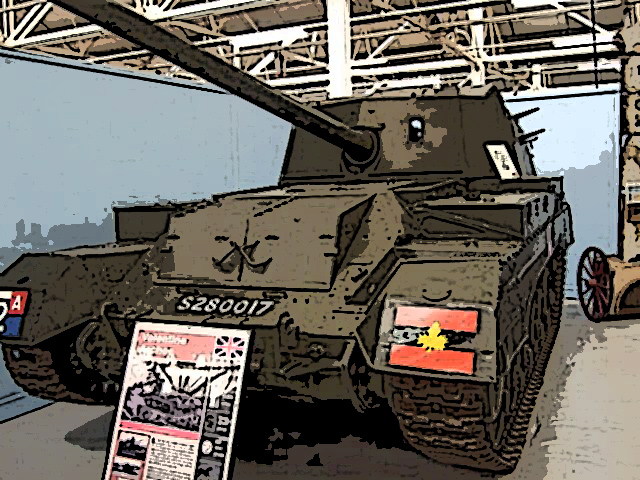 |
Le canon 17 livres était une excellente arme à feu avec une puissance presque égale à celle du 88mm, mais c’était un canon de grande dimension et très lourd nécessitant un véhicule pour le déplacer, cela signifiait qu'il ne pouvait vraiment être utilisé que dans un rôle défensif C'était la seule arme antichar pouvant venir à bout du char Tigre
Donc, cette arme a été monté sur des chars comme l’Achilles ou le Firefly et également sur des châssis de chars obsolètes Valentine donnant un engin antichar curieux avec une arme montée vers l'arrière tirant en fuite
Développement
Le17 pounder est une arme antichar plus efficace en défense que dans l'attaque.
Fort de ce constat et afin de tirer le maximum de cette arme les militaires ont besoin d'un châssis en vue de monter cette arme dessus afin de lui conférer plus de mobilité. D'abord, il fut monté en tourelle, dans certains chars comme le A 30 Challenger , le Comet Firefly ou l’Achilles
Le concept de chasseur de chars avait été initialement rejeté par les Britanniques, mais en raison du succès des chasseurs de chars allemands ceux-ci décidèrent de faire machine arrière et reconsidérer le problème
Ils utilisent la même recette allemande qui utilisent des châssis de char obsolètes pour monter des armes antichars
La première tentative a été t de monter un 3" Anti-Aircraft sur un char Churchill en août 1942 50 de ces véhicules ont été ainsi transformés
Ces véhicules ne semblent pas avoir été utilisés au combat, mais leur arme aurait été efficace contre n’importe quel char allemand en service durant cette période.
Les britannique misent sur le M10 américain disponibles en nombre, à compter de 1942, Mais le programme prend du retard et il est décidé de monter le17pdr sur un châssis britannique.
Le Crusader et le Valentine sont sélectionnés Le Crusader en raison du ratio poids/puissance et le Valentine pour sa fiabilité et sa faible silhouette Le Crusader est abandonné car trop petit et pas assez puissant Le Valentine est finalement choisi Le châssis du Valentine est aussi un des rares châssis pouvant accueillir une arme aussi imposante . Mais les britanniques ne peuvent faire tous comme les autres car cette arme a été montée en fuite soit à l’arrière
La mise au point s'est poursuivie en 1943, mais les progrès sont lents car entretemps le M10 est disponible en grande quantité et on se rend compte que l’on peut monter le canon de 17 pounder dans la tourelle du M10
La production démarré donc à la mi-1944 et l'Archer a commencé à être disponible en Octobre 1944. L’avance rapide des Alliés depuis 6le 6 juin 1944 rend cette arme au début moins utile . mais le renforcement de défense allemande et les combat d’embuscade montre son utilité
Description
.jpg) |
Le canon est monté dans la casemate ouverte car le châssis du Valentine ne permet pas l’utilisation d’une tourelles
Il tire en fuite conception peu courante chez les chasseurs de chars
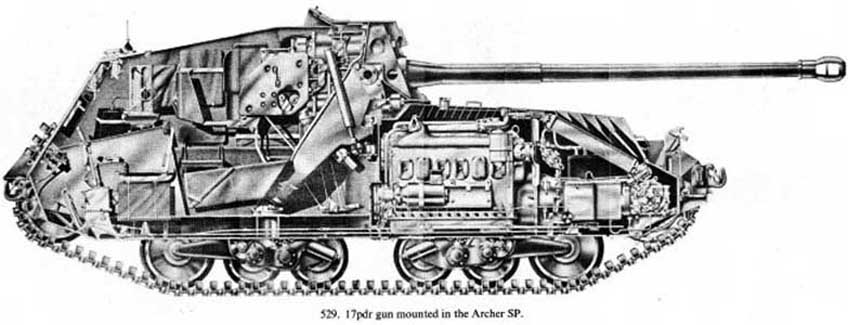 |
| Internet |
.
En raison de la longueur du canon le tube occupe tout la longueur de l’habitacle et de plus il ne peut tirer en roulant car la culasse aurait décapité le conducteur ( donc attention dans vos dioramas avec un archer en embuscade par de pilote aux commandes sinon vous avez tout faux ) Le montage de cette arme en fuite peut dans un premier temps lever des doutes et des questions sur la pertinence de ce concept Mais bientôt les avantages de cette configuration sont démontrées
L’Archer se révèle rapidement comme étant un engin difficile à toucher et très efficace dans la lutte antichar en dépit de son design maladroit.
 |
| Internet |
Combiné avec sa silhouette basse, l'Archer est en fait une excellente arme d’embuscade, ce qui permet à son équipage de faire feu puis de quitter sa position rapidement. Il a également une mitrailleuse Bren pour son autodéfense
L’ Archer pèse15 tonnes, avec un équipage de 4 Il se déplace et une vitesse maximale de 12kms/h en tout terrain
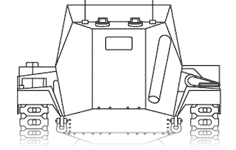 |
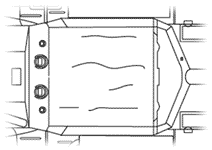 |
| Internet |
Internet |
655 Archer seront finalement construits sur une commande initiale de 800
L’Archer au combat
.jpg) |
| Royal Artillery |
Classé comme canon automoteur il employé comme, tel par la Royal Artillery plutôt que les Cavalry ou Tank Regiment
L'Archer a été utilisé pour la première fois en Octobre 1944 en France, en Allemagne (ETO) et en Italie. (MTO)
Après la guerre, il a été vendu aux armées alliées, il a été vu en action en 1956 avec l'armée égyptienne durant la crise de Suez
L’ Archer du Musée de Latrum était en service auprès de la 6e Brigade d'infanterie égyptienne qui défendait Abu-Agueila.
Caractéristiques
Poids 15 tonnes
Équipage 4 (commandant, tireur, chargeur, pilote)
Longueur 6,7 m
Largeur 2.76 m
Hauteur 2.25 m
Moteur GMC 6-71 6-cyl diesel 192 ch
Carburant 227 litres
Autonomie 140 km sur les routes
Vitesse 32 km / h sur route: 12 kms/h tout terrain
Armement QF 17 livres avec 39 coups
MG Bren 303 pour l'autodéfense
Autre Photoscope (Others Walk Around ) 1
Archer Sp 17pdr Valentine Mk I (Bovington)
The 17 pounder gun was an excellent AT weapon with a fire power nearly equal to that of the dreaded German 88mm gun, but it was also big and heavy needing a vehicle to move it, this meant it could only really be used in a defensive role It was the only anti tank gun to be able to destroy a Tiger Tank
So this weapon was mounted in several tank like the Achilles or the Firefly and also on the frame of the obsolete tank Valentine ti make a curious anti tank weapon with a gun mounted facing backwards
 |
| Internet |
Development
The 17 pounder was a gun AT weapon but it was more effective in defence than in the attack.
So to keep the superiority of this weapon militaries need a vehicle with the intention to mount it on to give it more mobility . First he was mounted in turret in some tanks like A 30 Challenger Comet Firefly or Achilles
The tank destroyer concept was initially dismissed by the British but due to the success German Tank Destroyers were having it was decided to aheadI
In a similar way that the German forces used out of date tank chassis to mount their tank destroyers the British decided to make us
 |
| Internet |
The first attempt was to mount a 3" Anti-Aircraft gun on a Churchill Tank, first of these were completed in August 1942 and a total of 50 of these vehicles were completed.
These vehicles do not seem to have been used in combat but their gun would have easily been capable of dealing with any German tank of the period.
 |
 |
| Internet |
Internet |
It had been hoped that the American M10 would have been available in numbers in 1942 but when it was realized this would not be the case it was decided to try to mount the 17pdr on any vehicles that would take it.
Both the Valentine and Crusader were looked at, the Crusader due to it's high power to weight ratio and the Valentine due to its reliability and low profile. The Crusader was ruled out as being too small and underpowered The Valentine was eventually chosen as mounting the gun on the Crusader would have meant it was extremely exposed. The Valentine chassis was then soon chosen for this role because it was also one of the few chassis that could accommodate such a large gun. But British no make all like the others because the gun was mounted to the rear Development continued in 1943 but progress was slow as the M10 had been made available in larger numbers and it was realised that the M10 would also be able to be converted to carry a 17 Pounder gun. Production started in mid 1944 and the Archer began to be issued in October 1944 With the fluid and rapid advances of the Allied forces following 6th June defensive weapons were becoming much less useful
The gun was mounted in a simple low open-topped armoured box with gun barrel to the rear because Valentine had a relatively small hull and it was not possible to use a turret
Description
.jpg) |
The weapon was mounted in a low open topped armoured box mounted facing backwards, a very common design in tank hunters of all nations.
Due to length of the gun the barrel extended into the rear of the vehicle which kept length down but meant that the gun actually recoiled into the driver’s space making it impossible to fire while moving,because during the fire gun breech recoiled into the driver's space. The rear mounting at first produce some doubts and critics upon the adequacy of this weapon, but soon this configuration show somes advantages and quickly Archer proved to be a hard hitting and effective vehicle despite its awkward design.
Combined with its low silhouette, the Archer made an excellent ambush weapon, allowing its crew to fire off a few shots, then drive away without wasting time turning around. It also carried a Bren machine gun for defense against infantry
Archer weigh15 tons, had a crew of 4 and a top speed of 12kms/h off road. 655 archer wild be produced . out of an original order of 800
Operational Life
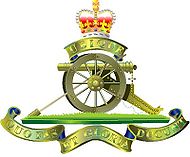 |
| Royal Artillery |
Classified as a self-propelled gun and as such was operated by the Royal Artillery rather than a Cavalry or Tank Regiment
The Archer first came into service in October 1944 seeing action in France, Germany and (ETO) and Italy.(MTO)
After the war it was sold to Allied armies and it was see in action in 1956 with Egyptian Army during the Suez Crisis The Archer in Latrum Museum was employed by the Egyptian 6th Infantry Brigade which defended Abu-Ageila.
Technical data
Weight 15 tons
Crew 4 (Commander, gunner, loader, driver)
Length 6.7 m
Width 2.76 m
Height 2.25 m
Engine GMC 6-71 6-cyl diesel 192 hp
Fuel capacity 227 liters
Operational range 140 km on roads
Speed 32 km/h on highway off road: 12km/h
Armament QF 17 pounder 39 rounds
303 Bren MG for self defense






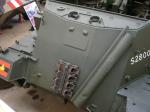

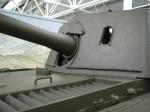
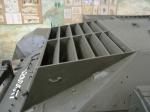
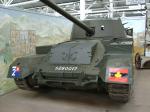
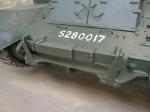
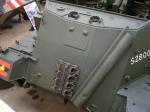
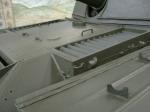
.jpg)
.jpg)
.jpg)




.jpg)
